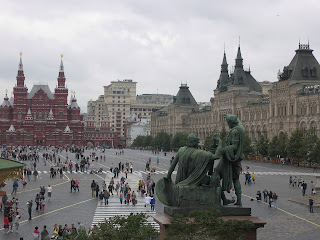August 4, 2013
Budapest is the modern combination of the two cities of Buda and Pest that sit on either side of the Danube River. We are going to explore Pest first. Surprisingly we have local guides today, two young Hungarian girls that are the friends of our neighbor in Tucson. I wonder how much he had to bribe them to spend their day with two Americans old enough to be their parents.
We start with a metro ride out Andrassy Avenue to Heroes Square. In the middle is the Millennium Monument which has bronze statues of all the early kings of the Hungarian Empire starting with Arpad, the chieftain who led the Magyars to this area in 896 AD. I love that the statues look like long-bearded barbarians from the East. Much of the epic buildings and monuments of Budapest were built by the Austro-Hungarian Empire circa 1896 for the 1000th anniversary of this founding. In the adjoining city park are lots of other attractions including a circus, spa, castle and nice walking park.
From there we return to central Pest for a visit to the Opera House and then St Stephens Basilica (Istvan in Hungarian). Istvan is the king famous for bringing Christianity to Hungary in 1000 AD and is now a canonized saint. His likeness is everywhere. The interior of the basilica is quite beautiful. Just as we enter, a Hungarian mass begins. In the days of my youth, it would have been in Latin, understandable by all Catholics.
We then walked to Vorosmarty Square, one end of the pedestrian Vaci street we strolled last night. Since my escorts eat Hungarian food every day, we take them to lunch at the iconic American restaurant chain, Hard Rock Cafe. As a big bonus, it had air-conditioning.
With our energy restored, we walked along the Danube River passing the Chain Bridge which when built across the wide Danube in 1847 was considered an engineering wonder. Farther on we come to the Parliament building. It is a stunning Gothic Revival landmark, but like many of the buildings we have encountered, it is shrouded in scaffolding. I guess that is the testament to the ongoing modernization of Eastern Europe.

From Parliament, we took a tram along the river and then stopped for ice cream at McDonald's where we bade good-bye to our young hosts. Since we bought a 24-hour Metro Pass, we decide to continue on to the Buda side. Since Buda is on the setting sun side, I figure we need to go there in the evening for a chance to have a decent photo. Buda, unfortunately is at the top of a hill, and the metro doesn't reach that high. So we have a little bit of a climb. I am so glad we went, as the views of Pest and the Danube River are stunning. We walk along the ramparts of old Buda to Fisherman's Bastion. (It takes its name from the guild responsible for defending this
stretch of the city walls). Much of the terrace is filled with tourists snapping photos amid a bunch of restaurant tables that line the edge. The prime seats in the shade are reserved. Somehow I manage to find an open table hidden behind a round wall, where we have a couple beers on our own private terrace graced with awesome views of the Danube River, Parliament and St Stevens.

Refreshed we continue south along the ramparts closer to Buda Castle discovering one great view after another. In front of the Castle we stumble upon a statue of Prince Eugene of Savoy. We visited his palace in Vienna and he is honored here because he liberated Budapest from the Turks. I love it when I run into connections with other places we have visited. It ties together our trip and helps us remember the history we learn.
Back at the hotel, we hear some musicians playing in the restaurant so we decide to stop in and have desert. A nice finish to a long day of sight-seeing.
 Today we start the long process of going home. This is the one part of international travelling I dislike. We are up early to take the train to the small Krakow airport. Four flights and a full day of travel, we arrive home safely.
Today we start the long process of going home. This is the one part of international travelling I dislike. We are up early to take the train to the small Krakow airport. Four flights and a full day of travel, we arrive home safely.



















































